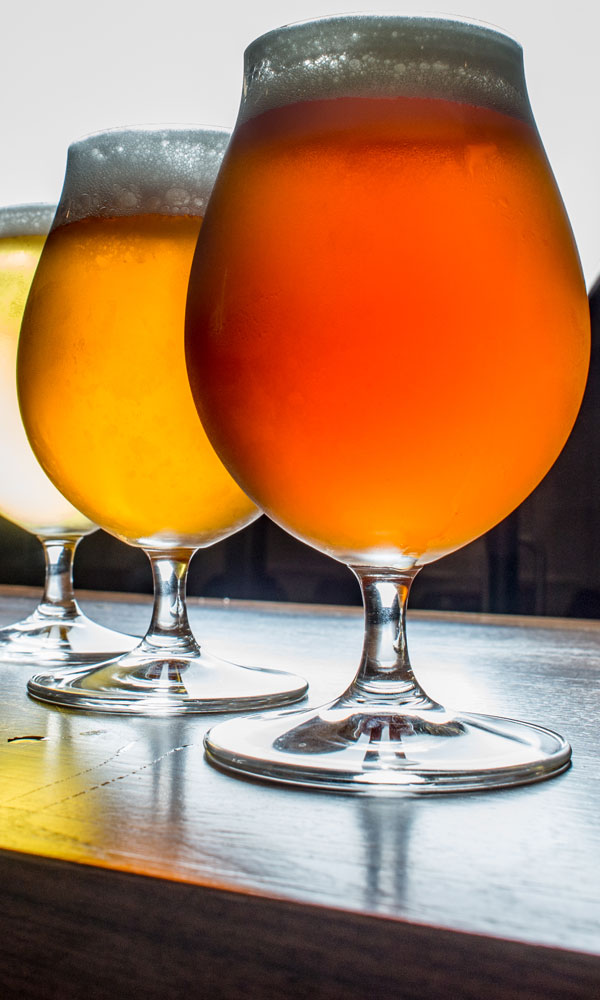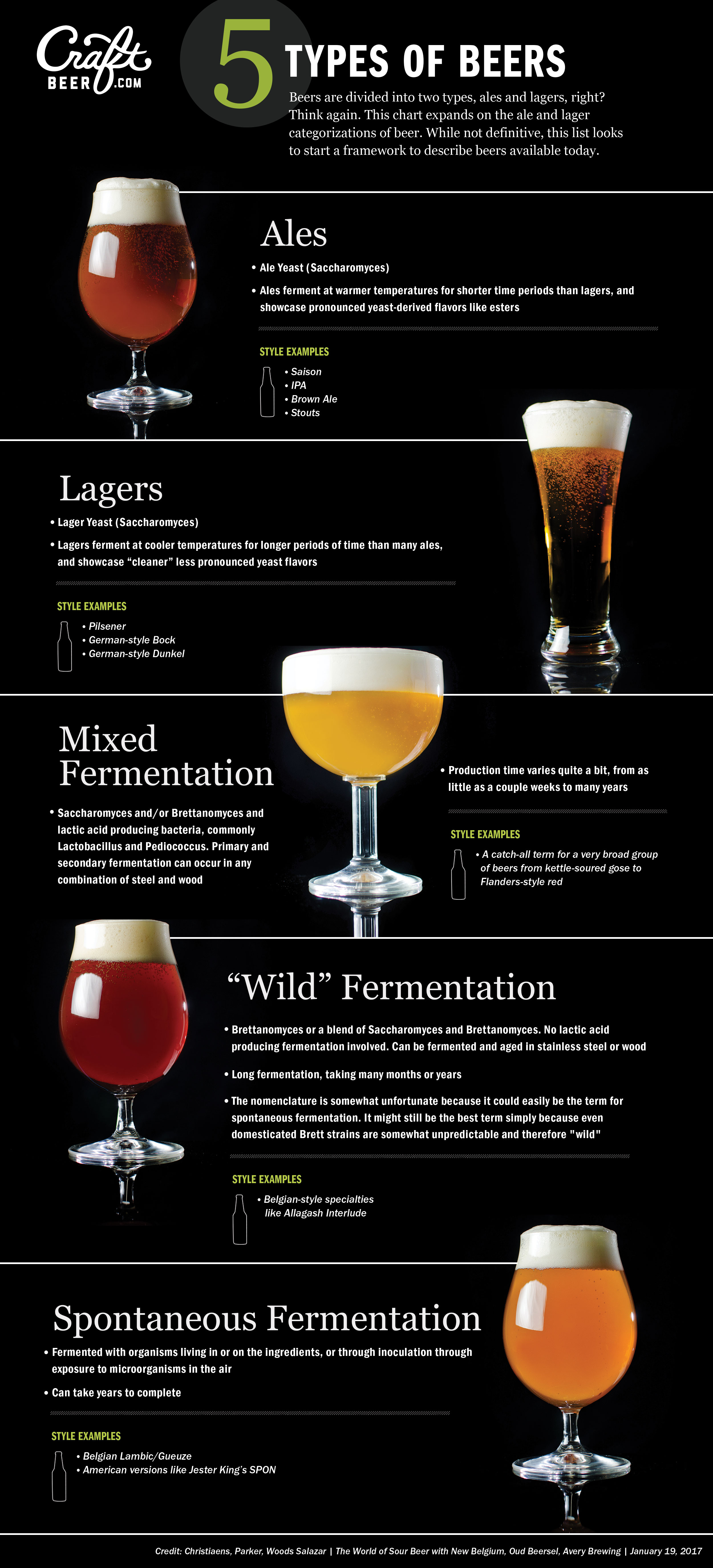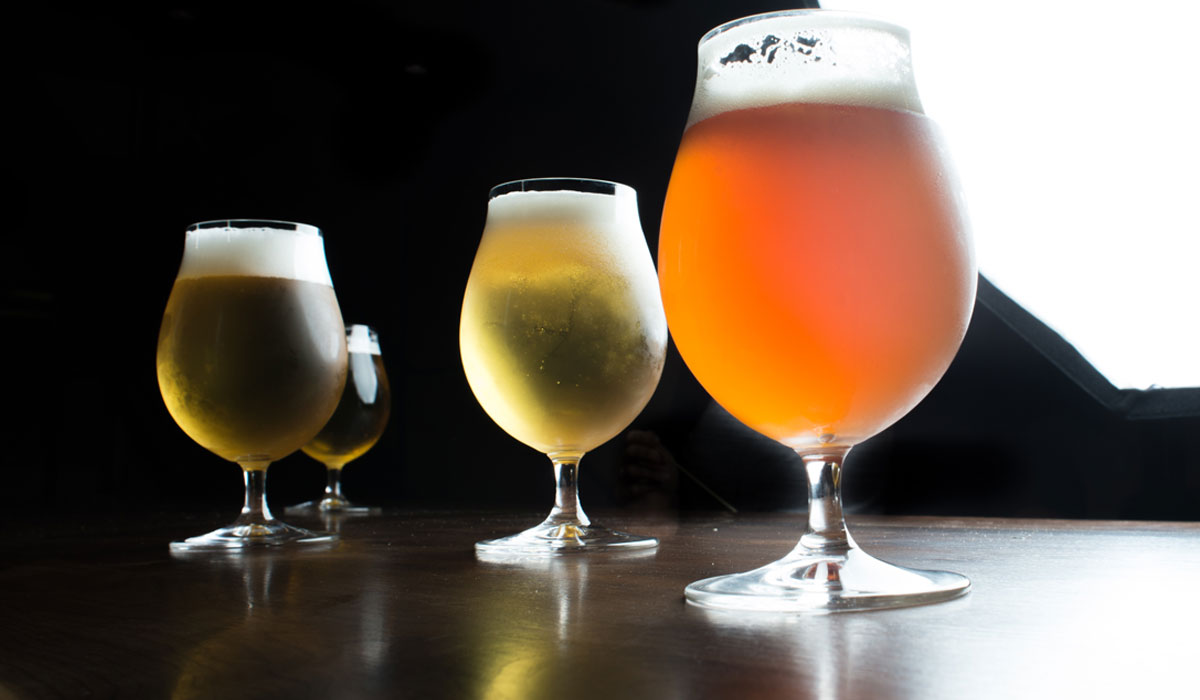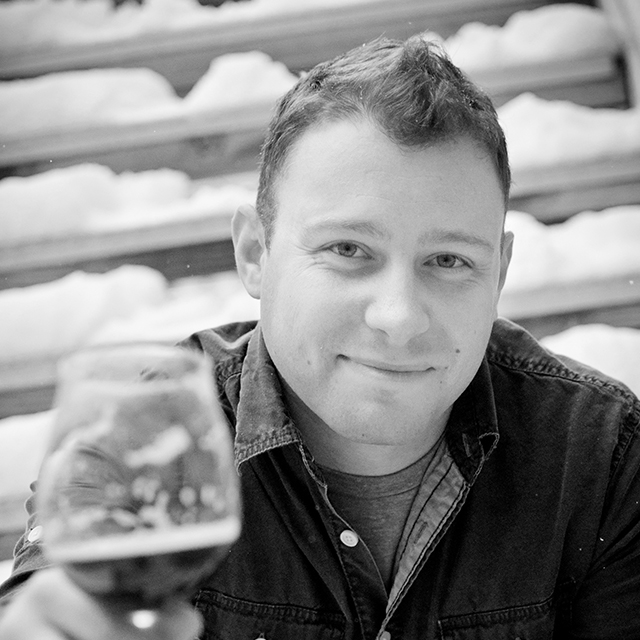I’ve had many ah-ha/ awe-inspiring/ pee-my-pants-just-a-little craft beer moments, but one of my fondest memories was the first time I discovered New Belgium’s La Folie. I can remember the Colorado sun shining through the skylight of the Ft. Collins brewery’s Liquid Center, striking the taster-sized glass and causing the strawberry-hued beer to shimmer. The taste was unlike anything I had experienced before. For years after I would zealously describe the beer’s experience as if one crammed a heaping handful of sour patch kids in their mouth and then got punched in the jaw; only in the most exhilarating way possible, like if you were a UFC fighter and getting punched in the mouth was your jam and you fed off of it. Hit me again! I said hit meeee!

(MORE: Brewers Go Beyond Bourbon for Barrel-Aged Beer)
The beer was a complete anomaly back then. The purposeful introduction of souring bacteria and unconventional yeast deemed too risky for breweries; cross-contamination of these new cultures into the brewhouse could spell doom to the business. There were few other opportunities to try sour beers, especially from American craft brewers. Not so today.
Sour beer, the broad categorization of which is now worth a quality-controlled risk driven by the consumer’s desire for the funkier, the complex-ier, the sour-ier. The popularity of these styles, not just by consumers, but by beer-loving brewers is obvious. How do you pack 2,000 brewers into a 1,000 seat room during the Craft Brewers ConferenceOpens in new window? Put together a panel of sour authorities, sprinkle in a brewer or two from Belgium, and get the eff out of the way. Even today, my mother-in-law asks where to score a couple bottles of Red Poppy for cards night with her gal-pals.
The explosion in breweries producing sours is a blessing or curse depending on whom you ask. The general term “sour” carries with it much potential for the consumer and brewery but does little to provide context for how the beer was produced, making it a crap-shoot on what consumers think they are ordering. The variety of beers marketed as sour range quite widely in production methods, production time and cost to produce. This is not to say that a two-week, stainless-steel, mixed-fermented goseOpens in new window can’t be every bit as mind-blowing as a beer spontaneously inoculated by native yeast spores floating in on a cool fall evening’s breeze, transforming wort into a multi-layered masterpiece in an oaken barrel over the course of months or even years. They are both sour beers, both potentially memorable beer experiences, but not the same type of beer and definitely not the same investment or price tag. We need to go beyond calling or categorizing any beer with a bit of acidity a “sour beer.” How do we do it?
(MORE: 9 Weird Brewery Names and the Stories Behind Them)
Sour ≠ IPA
Sour does not equal IPA. The craft beer world knows how to handle the broad category of IPAsOpens in new window. Double, triple or session IPAs; red, white or black IPAs; fruit, hazy or yes, even sour IPAs all have a single discernible base style as an anchor.
 While the term sour is apt for any beer with a wide range of acidic character, it fails to fully explain the difference between two beers with “sour” on the label. Lembeek, Leipzig and Berlin all have beers that are listed under the sour side of a beer menu. Lambic/gueuzeOpens in new window, gose and Berliner-style WeisseOpens in new window really have little in common with the exception of the wild, spontaneously activated, souring and funkifying organisms, all which likely bear no resemblance genetically to anything the other regions have. Sour beers did not originate in a single geographic area the way the United Kingdom is credited for India Pale Ale, traditionally, or U.S. craft brewers claim the style’s contemporary revival.
While the term sour is apt for any beer with a wide range of acidic character, it fails to fully explain the difference between two beers with “sour” on the label. Lembeek, Leipzig and Berlin all have beers that are listed under the sour side of a beer menu. Lambic/gueuzeOpens in new window, gose and Berliner-style WeisseOpens in new window really have little in common with the exception of the wild, spontaneously activated, souring and funkifying organisms, all which likely bear no resemblance genetically to anything the other regions have. Sour beers did not originate in a single geographic area the way the United Kingdom is credited for India Pale Ale, traditionally, or U.S. craft brewers claim the style’s contemporary revival.
That’s a pickle for those struggling to provide context to these acidified ales without pigeon-holing or stunting the creativity that is so important to small and independent craft brewers or hindering the breweries’ marketing department’s job to move cases.
When you look at it that way, we’re lucky we have the term IPA to describe anything that is strongly hop-forward or bitter. Bitter beer is not all the rage; IPA is. It is that identifiable base style, which many believe is needed for sours. With 5,000 craft breweries in the U.S., many of them making very different sour beers, how do we categorize them while showing cultural and geographical reverence, but also offering easily understandable cues to educate the consumer? It’s a pickle alright — a sour beer pickle.
(MORE: What is Craft Beer?Opens in new window)
Sour Beer Pickle: Made in America
Or not. Maybe it’s not a pickle at all. Maybe you accept the term sour as a style, instead of a limiting taste descriptor that does no service to these diverse beers. These sour beers are some of the most ancient of ales, so why now is there some problem with calling them sour? The Belgians get along fine marketing their sour beers, don’t they?
Not exactly. Belgians don’t call their sour beers sour, they call them beer. Sour beer is largely an American term. We tried a Lindemans or La FolieOpens in new window and grouped them on a singular taste rather than considering the origins and/or process of either. We didn’t know any better. We just knew we loved that mouth-puckering acidity. We didn’t care that they were different beers. Over time, sour became a word that meant crazy avant-garde beers, beers worth waiting in long lines for and shelling out the bucks for.
Not every sour beer follows that blueprint or trend. Many lactic, mixed-fermentation, so-called quick-sours have proven just as popular as the one’s that need patience. A brewery known for both styles, as well as ales and lagers, is Avery Brewing in Boulder. Avery is renowned for super creative wild and mixed fermentation beers with layers upon layers of flavors. Avery has also had success with a “Tropical & Tart” witbier known as Liliko’i KepoloOpens in new window, described by Avery’s Chief Barrel Herder Andy Parker as an after work beach beer – inspired by his days working on Kona.
(MORE: Stop Hoarding. Why You Need to Drink Beer Fresh)
Liliko’i is a bracingly tart, fruity Belgian-style WitbierOpens in new window, akin to the brewery’s White Rascal. It is designed, produced and meant to be enjoyed at a price reflective of the resources put into it. Here’s the kicker: Liliko’i is produced with no sour organisms what so ever. The tartness comes from loads of passion fruit added to the beer. It is an amazing beer, perfect for a float trip, or the beach or breakfast, but should it be in the same category as one of Andy’s barrel-aged sours that are fermented with a cocktail of souring bacteria and Brettanomyces that slowly changes a beer in one of the 8,000 curated barrels at their production facility?
Could the lack of education and clarification of the sour category work against it and turn consumers off completely? Could someone or some company pass a beer off as something it is not in an effort to capitalize on the sour beer bonanza? The concern exists and further makes a case to educate beer fans on what the beers are and how they are produced. Nobody wants to discover they paid too much for a beer, even if it was a delicious beer.
As Parker said, the growing number of brewers who are trying to figure a way out of this pickle are trying to do the right thing, and if these brewers are, “doing right by their beers and their customers, the desire and need to better define this category becomes a source of pride.”

Sour Solution?
The sour beer pickle is as complex as some of the beer it focuses on, and even Avery’s Andy Parker confesses he’s unsure of a solution. Added to the equation is an international beer community that already has taken steps to define and protect the terms that are so important to their regions’ beer makers. HORALOpens in new window, a group of Belgian lambic producers, exist to promote their unique creation and act as a regulatory agency for the misuse of the term “Lambic.” HORAL uses a seal to identify what they deem to be traditional lambic producers. Could a governing body in the United States help identify these beers, like HORAL tries to in Europe? Many brewers, including Parker, respect these regional terms, avoiding their use out of respect to the history and believe a voluntary decision to identify a brewer’s own beers in a consistent and educational manner could help. Other brewers have adjusted the term out of respect to international names while providing clues to the consumer of what their beer is inspired after. For example, The Bruery’s Rueuze, a play-off of gueuze or Russian River’s Sonambic, a Sonoma-California lambic.
Others have looked to provide stats on the acidity of their beers, similar to how IBUs represent bitterness levels. Firestone Walker provides titratable acidity on some of their labels. Titratable acidity is a measure of how strong something acidic tastes (different from PH which just measure the total amount of acid in solution), but like IBUs, a singular number can’t show the entire picture. In addition, brewers don’t want to spark another IBU arms race like beer lovers saw with IPAs.
(TEST YOUR BEER KNOWLEDGE: Beer 101 Course)
New Belgium’s blender, Lauren Woods Salazar, reports a growing number of craft brewers who want to identify American sours that do not infringe on international appellations. American-made spontaneously fermented beers reflect the brewers’ own regionality and styles with their own uniqueness in many cases. It is important to recognize that. Despite a fiercely independent community of now 5,000 brewers, there seems to be a collective source of pride for the brewers who are producing all types of acidic beers.
As professionals mull over the best course to wade through the complexities of the sour beer pickle, it is important for us as beer enthusiasts to work to educate ourselves on the vast world of sour beer. We all need to learn about these beers to be able to differentiate and appreciate well-made beers, without denigrating or miscategorizing them. Above all, we should be able to make confident choices. Fight the urge to suggest that two beers can be compared simply on the fact that they lend an acidic, tart or sour taste. Marginalizing a beer to a single taste discounts the entire reason we love craft beer: for its variety, approachability and the unique and intimate experiences each category, style and individual beer provides. La Folie remains one of the most interesting beers on the planet, like many other great beers in this broad category, the true experience is limited if we continue to lump them together because of a single note.
CraftBeer.com is fully dedicated to small and independent U.S. breweries. We are published by the Brewers Association, the not-for-profit trade group dedicated to promoting and protecting America’s small and independent craft brewers. Stories and opinions shared on CraftBeer.com do not imply endorsement by or positions taken by the Brewers Association or its members.


Share Post